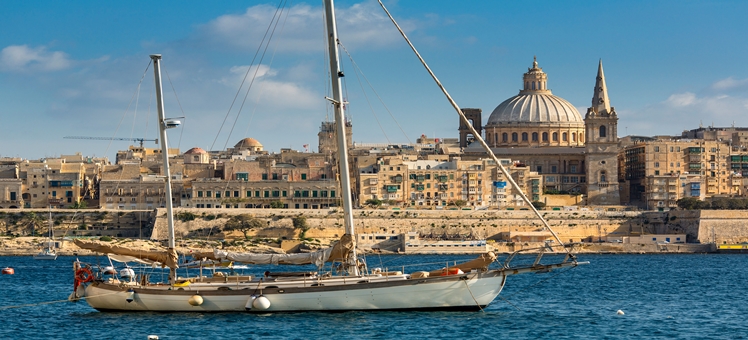
The islands that make up Malta are unique. From its sandy beaches and almost year-long sunshine to its fossil-spoilt cliffs and local traditions, there is an abundance of opportunities that promise to make your stay a memorable one; all this on a small island that boasts the highest concentration of UNESCO World Heritage sites in the world.
BeachesYou are never far away from the Mediterranean Sea on the islands of Malta, particularly on Gozo, where you can see the sea from almost anywhere you stand. The northern coast of Malta is typically the place to go for the best beaches, the most popular of which is perhaps Golden Bay. Golden Bay is on the northwest coast of the island and is relatively unaffected and unspoiled from years of tourism, as are most of the beaches in Malta. You’ll also have the chance to try out water sports. On the rocky coastline of Gozo you should head for Xlendi Bay, the sunsets from here are well worth hanging around for. Visiting Comino? It would be a crime not to take in The Blue Lagoon and swim in the azure waters. Your camera is also in for a work out.
Valletta
The present-day capital of Malta is a city of variety. Like the entire island of Malta, Valletta is steeped in history and offers an array of cultural and historical sites. The most notable of these is St John’s Co-Cathedral, which was built by a Grandmaster of the Knights Hospitaller – a Christian military order – and contains chapels, Carvaggio paintings, tapestries, and important relics. The floors of the cathedral themselves are the tombs of famous knights of the Order of St John. The crypt is the resting place of the city’s founder, Jean de Valette.
Ancient Maltese history
The Hypogeum of Hal-Saflieni arguably represents one of Malta’s main attractions. This underground necropolis is 5000 years old and the remains of more than 7000 individuals have been found here. Such is Malta’s care for this unique structure that only 60 people are permitted entry daily. For an insight into Malta’s military history, check out Fort Saint Angelo on the Grand Harbour in Birgu. This fort dates back to early medieval period and was the seat of the Grand master of the legendary Knight of Malta. All of Malta’s history is linked to the sea, which you can learn about at the Malta Maritime Museum; just a short walk to the south of Fort Saint Angelo (which unfortunately, isn’t open to the public). Other popular historical attractions to visit include the Ggantija Temples (older than the Pyramids in Egypt) and the Hagar Qim Temples - both UNESCO World Heritage Sites.
Mdina
Arguably Malta’s best attraction, Mdina is a must for anyone visiting the island. This ancient walled city is a mixture of medieval and Baroque architecture and the cobbled streets and impressive views make it the perfect place for a warm afternoon. Soak up the history and imagine just how busy this now peaceful settlement once was.
St. Julian’s
Perhaps the most popular area of Malta for tourists is St. Julian’s on the eastern coast of the main island. St. Julian’s is known for its nightclubs, restaurants, and hotels, particularly the small district of Paceville. St. Julian’s is dominated by clean white stone pavements and tan-colored bricks; Spinola Bay is an especially scenic part, with elegant, black lampposts and garden-smelling flower beds, which makes for a very pleasant walk during the day or night.